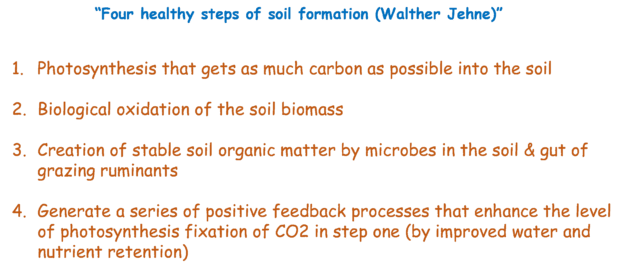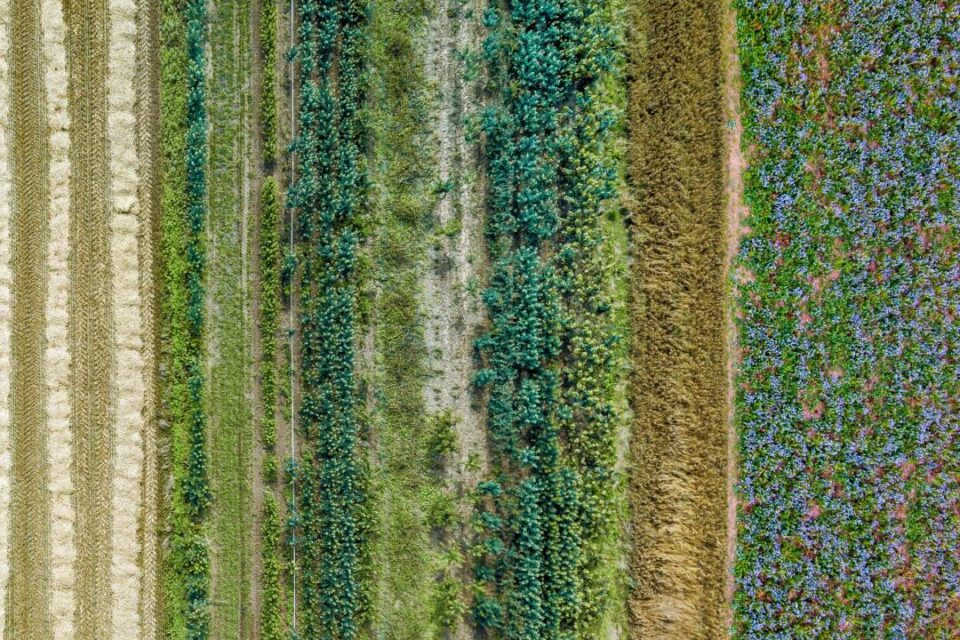The food polycrisis
In a New York Times article on 28 July 2024, David Wallace-Wells reports on the state of the modern food system in the United States and, more broadly, in the world. He labels the system ‘fragile’ and quotes Chris Barret who asserts that the world is facing a ‘food polycrisis’. There is no unifying theme for this crisis. Rather, it is manifested in contradictory trends such as rising obesity while undernourishment is up. Or falling micronutrient content of many popular vegetables although overall yields are still growing (a bit). Another example: many farmers can barely make ends meet while food prices have risen across the board and the agro-industry is hugely profitable. This dire state of affairs will probably worsen when the effects of climate change—i.e. more variable and more extreme weather—become more pronounced.
David Wallace-Wells anticipates more disruptions, hazards, and price shocks.
Nevertheless, Wallace-Wells asserts that ‘disruption is only half the story’ and anticipates that adaptation and innovation will, somehow, transform the global food system. That is, after all, a big part of the human story where opportunities often arose from crisis. He quotes: ”the pressure on the present food system is not a sign that it will necessarily fail, only that it must change”.
Yet given the diversity and sheer scale of the global agricultural production system, Wallace-Wells finds it difficult to see what this new food system will look like, although it is clear to him that it needs to deliver better and more affordable nutrition while maintaining healthy ecosystems.
When trying to picture the future of agriculture, I think the concept of landscape functions may be useful.
The Five Landscape Functions
The rationale for connecting landscape functions with the agri-food system is obvious when you realize that more than one-third of the planet’s land surface is used for food production while some 70% of renewable freshwater resources are used to irrigate farmland.
The latter statistic also explains why the future of agriculture matters so much to water resources managers.
Charles Massy in his insightful book “Call of the Reed Warbler” identifies 5 interconnected landscape functions:
- the solar-energy function; which is focused on maximizing the capture of solar energy by fixing as many plant sugars—via photosynthesis—as possible;
- the water-cycle function; which should maximize rain water infiltration and storage in the soil;
- the soil-mineral cycle function; focused on creating the soil-food web that recycles abundant plant nutrients in plant-available form;
- the dynamic eco-system function; which aims to maximize biodiversity and the health of integrated ecosystems at all levels;
- human-social function; which should ensure that human agency maintains the above landscape functions (the text in the above enumeration is adapted from Charles Massy’s book).
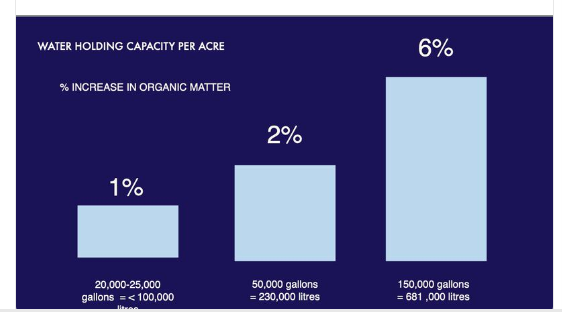
The entry point of these interconnected functions is to use photosynthesis—which results in plant growth above and below ground—to get as much carbon as possible into the soil. Carbon builds living soil but also increases soil moisture storage capacity. Further, decaying plant roots provide pathways for oxygen and water to enter the soil. It facilitates rainfall to infiltrate—rather than run-off without productive use—and thus improves rain-water productivity and enhances drought resilience. In addition, plant-cover protects the soil from high temperatures and subsequent moisture loss, while also capturing rainfall. Moisture, in turn, facilitates biological oxidation of biomass (rather than chemical oxidation in which nutrients dissipate into the atmosphere). Hence moisture is essential to create the soil-food web that recycles a comprehensive set of plant nutrients, in a form that plants can absorb. Of course, moisture further stimulates plant-growth, and the above functions combined foster the emergence of a diverse eco-system—above ground and in the soil—that provides a myriad of beneficial functions. These include natural pest control. Undisturbed, the above system can sustain in perpetuity but in the ‘Anthropocene’ it is easily disrupted. Hence a deliberate effort is required to maintain this system. This is where the human-social aspect comes in. Only when the integrated landscape functions support a viable livelihood will they be maintained. Fortunately, there are now many examples, across all climate zones and continents, that this is possible.

The Landscape Function Heuristic
Wallace-Wells finds it difficult to picture the future of the agro-food system. That’s understandable given the sheer scale and diversity of agricultural practices in the world. Nevertheless, I think the five landscape functions—irrespective of the landform, soil conditions, and prevailing climate—provide a template for farming systems that maintain healthy ecosystems and provide healthy nutrition. In short: the future of agriculture.
In this regard, the five landscape functions can serve as a heuristic.
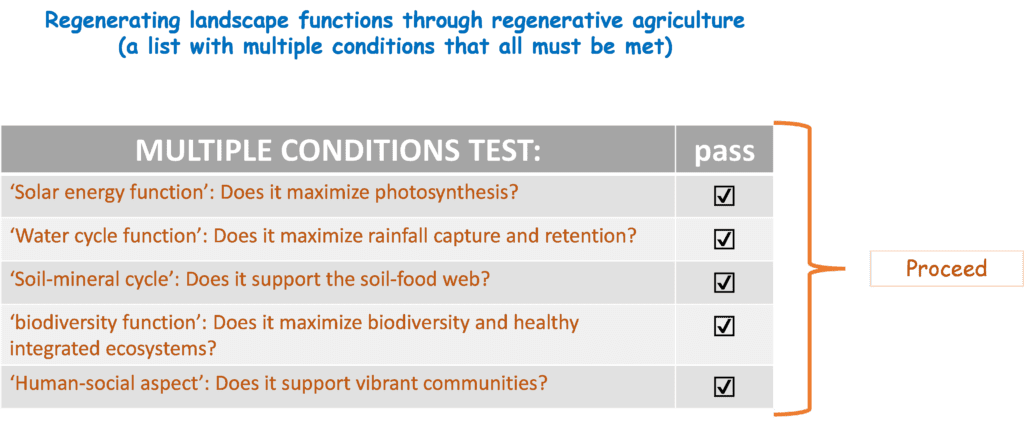
When a water or land manager needs to evaluate a prospective agricultural development, and his/her overall objective is to climate proof a catchment and create a long-term sustainable water resources system, then the five-landscape functions can serve as a ‘multiple conditions test’. That means that you should only proceed when all conditions are met.
By contrast, if one or more conditions are not met, appropriate remedial action is required before advancing with the project. The ‘landscape function heuristic’ can serve to prioritize and evaluate the corrective measures.
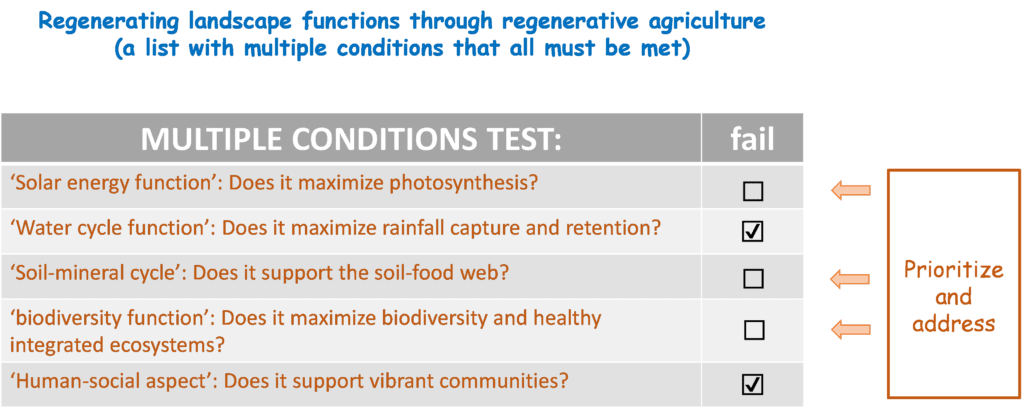
Given the scale of the agricultural activities, adopting this approach will have a major impact on water resources management—and, by extension, on ‘climate proofing’ the landscape and establishing a sustainable agro-food system. This simple heuristic, therefore, is a powerful tool for a water manager to nudge (complex) agricultural projects—that are in principle outside of the area of expertise of the water manager—onto a long-term sustainable path that will improve the hydrological functions of the landscape. Moreover, the heuristic cements a holistic perspective, which is often challenging for most managers, including ‘overwhelmed’ basin managers with too many emergencies on their platter.
‘Chasing game without a guide leads one into the bush’ (I Ching)
Two Limitations
Re-establishing landscape functions through regenerative agriculture is all very well. But is it something that can be done on a large scale? Two key questions illustrate the potential limitations:
- Are there enough farmers to implement labor-intensive regenerative agricultural practices?
- Can regenerative agriculture produce enough food to feed the world?
The answers are yet unknown. Time will tell. My sense is that regenerative practices will be implemented first on marginal and less productive lands, and in close vicinity of cities where producers have access to farmers markets. Non-communal rangelands also seem suitable. It is probable that conventional “high-input and high-yield” agriculture practices will continue for the time being on highly productive lands. In any case, there will be no “one size fits all approach” towards life-sustaining farming systems that support the landscape functions. People will figure out what works best in their environment.
Nevertheless, there is considerable scope to reduce demand for agricultural produce because a lot is wasted, over-consumed, or used for undesirable purposes such as sugar, corn-syrup, first-generation bio-fuels, or high-density feedlots. It calls for a scenario exercise on the future of agriculture (and health). Very interesting indeed!
Jimmy Sol prepared an excellent short video explaining Regenerative Agriculture. Regenerative farming practices depend on the land and climate and “the variety of different practices borders on the infinitive”. Hence, he only demonstrates three common forms: no-till farming, plant-growth stimulating grazing practices, and agro-forestry.
